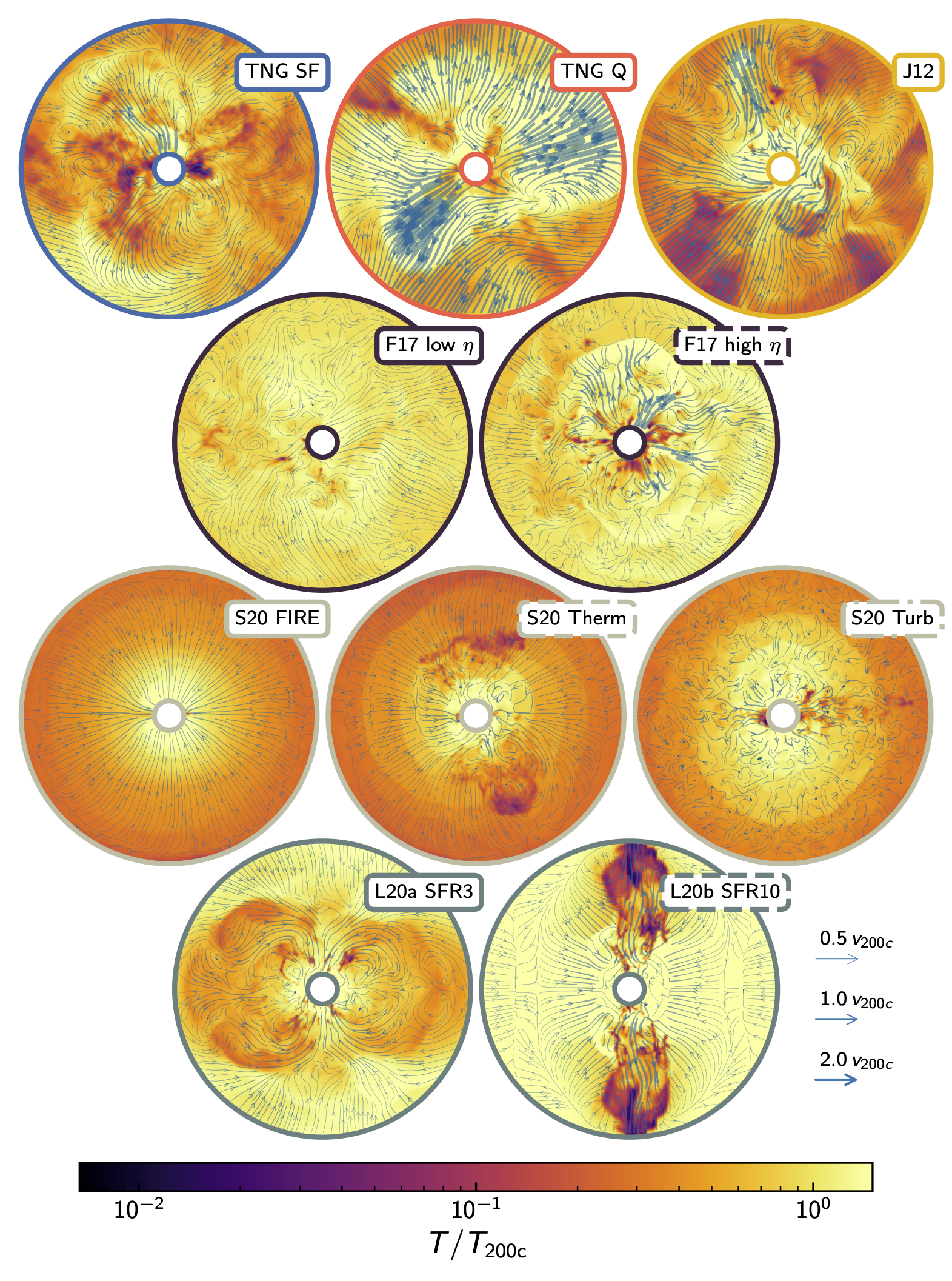First results from SMAUG: Uncovering the Origin of the Multiphase Circumgalactic Medium with a Comparative Analysis of Idealized and Cosmological Simulations
Published in ApJ, 2020
Recommended citation: Drummond B. Fielding, Stephanie Tonnesen, Daniel DeFelippis, Miao Li, Kung-Yi Su, Greg L. Bryan, Chang-Goo Kim, John C. Forbes, Rachel S. Somerville, Nicholas Battaglia, Evan E. Schneider, Yuan Li, Ena Choi, Christopher C. Hayward, and Hernquist, Lars (2020). "First results from SMAUG: Uncovering the Origin of the Multiphase Circumgalactic Medium with a Comparative Analysis of Idealized and Cosmological Simulations." ApJ. June 2020. pdf version available here
We examine the properties of the circumgalactic medium (CGM) at low redshift in a range of simulated Milky Way mass halos. The sample is comprised of seven idealized simulations, an adaptive mesh refinement cosmological zoom-in simulation, and two groups of 50 halos with star forming or quiescent galaxies taken from the IllustrisTNG100 simulation. The simulations have very different setups, resolution, and feedback models, but are analyzed in a uniform manner. By comparing median radial profiles and mass distributions of CGM properties, we isolate key similarities and differences. In doing so, we advance the efforts of the SMAUG (Simulating Multiscale Astrophysics to Understand Galaxies) project that aims to understand the inherently multiscale galaxy formation process. In the cosmological simulations, the CGM exhibits nearly flat temperature distributions, and broad pressure and radial velocity distributions. In the idealized simulations, similar distributions are found in the inner CGM (≲0.5r200c) when strong galactic feedback models are employed, but the outer CGM (≳0.5r200c) has a much less prominent cold phase, and narrower pressure and velocity distributions even in models with strong feedback. This comparative analysis demonstrates the dominant role feedback plays in shaping the inner CGM and the increased importance of cosmological effects, such as nonspherical accretion and satellite galaxies, in the outer CGM. Furthermore, our findings highlight that while cosmological simulations are required to capture the multiphase structure of the CGM at large radii, idealized simulations provide a robust framework to study how galactic feedback interacts with the inner CGM and thereby provide a reliable avenue to constrain feedback prescriptions.

Drummond B. Fielding, Stephanie Tonnesen, Daniel DeFelippis, Miao Li, Kung-Yi Su, Greg L. Bryan, Chang-Goo Kim, John C. Forbes, Rachel S. Somerville, Nicholas Battaglia, Evan E. Schneider, Yuan Li, Ena Choi, Christopher C. Hayward, and Hernquist, Lars (2020). "First results from SMAUG: Uncovering the Origin of the Multiphase Circumgalactic Medium with a Comparative Analysis of Idealized and Cosmological Simulations." ApJ. 903, 32, June 2020.
